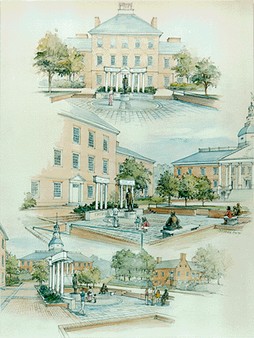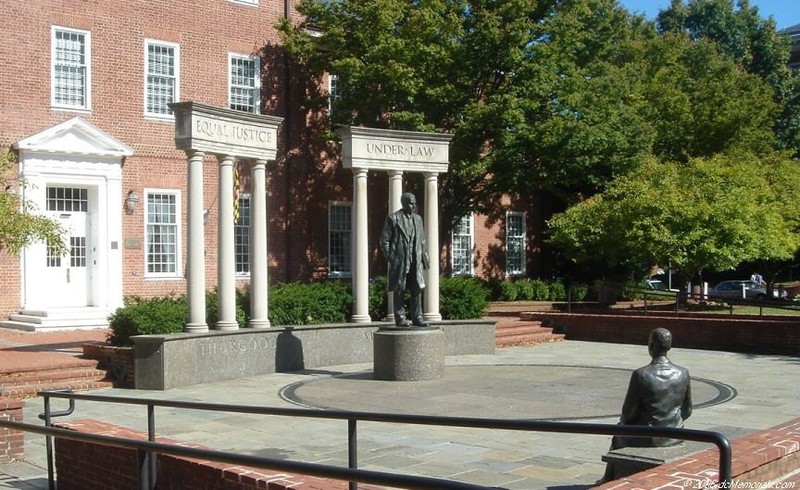Thurgood Marshall Memorial Statue
Introduction
Text-to-speech Audio
This statue of Thurgood Marshall by Maryland sculptor Antonio Tobias Mendez was erected in 1996 by the state of Maryland after being commissioned by Governor Parris Glendening. Mendez was one of several artists who participated in a national design competition, and the statue he crafted stands as a tribute to the civil rights leader and jurist who was one of the 20th century’s most noted advocates for equal rights under the law. The statue is located in State House Square, which commemorates the 200th anniversary of the Court of Appeals of Maryland. Within the square is a chronology of some of the important events in Marshall’s career.
Images
Antonio Mendez's Winning Design

Wide Shot of the Sculpture at State House Square

Backstory and Context
Text-to-speech Audio
Thurgood Marshall was an Associate Justice of the United States Supreme Court from 1967 to 1991, and he was also its first African American justice. Marshall is a native of Maryland and attended Frederick Douglass High School in Baltimore. He then studied law at Howard University, after which he moved to New York and served as chief counsel for the NAACP. In 1954, he argued against segregation in schools in the landmark case of Brown v. Board of Education. Marshall’s record before his nomination to the United States Supreme Court in 1967 included winning 14 of the 19 cases he argued before the Supreme Court as the U.S. solicitor general.
A year after Marshall passed away and exactly 40 years after the Supreme Court’s decision, Governor Glendening signed an Executive Order establishing a commission to install a statue to commemorate the life and works of Thurgood Marshall. Upon completion of the project, the Commission on Artistic Property took over and is currently responsible for the preservation and conservation of the sculpture. The sculpture’s dedication was attended by Justice Marshall’s wife, Cecilia, and other members of his immediate family.
The 8-foot statue depicts Thurgood Marshall as a young lawyer with pillars behind him that read “Equal Justice Under Law”. In front of the statue are two benches. Seated at one of the benches are two children who represent Marshall’s most important case, Brown v. Board of Education. On the other bench seats Donald Murray, who was denied admittance into the University of Maryland’s Law School. His case marked Marshall’s first important victory in his struggle for school integration that would culminate in the above-mentioned Brown v. Board of Education case. Interestingly, the spot on which the statue is situated is precisely where the Court of Appeals stood in 1935 when Marshall represented Murray in the Murray v. Pearson court case.
Sources
"Thurgood Marshall Memorial Statue," State of Maryland, accessed November 25. 2014, http://msa.maryland.gov/msa/stagser/s1259/121/6259/html/0001.html "Thurgood Marshall Biography," George Mason University, accessed November 25. 2014, http://chnm.gmu.edu/courses/122/hill/marshall.htm
